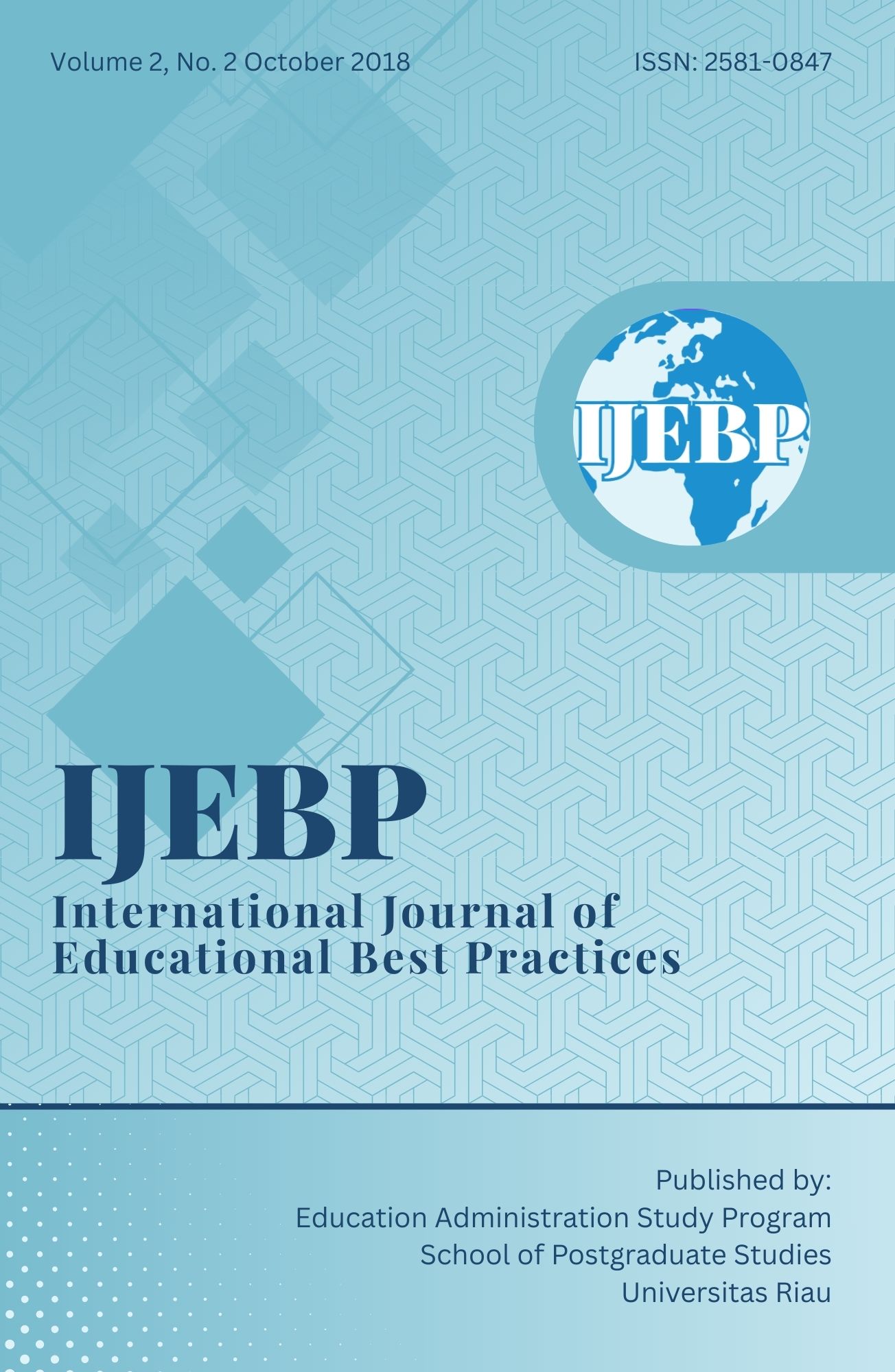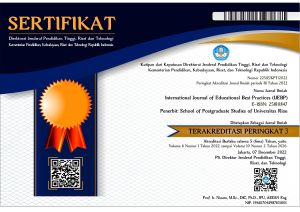EFL STUDENTS’ VIEWS AND EXPERIENCES OF CULTURE LEARNING: ARE THEY WORTHY TO FOSTER INTERCULTURAL COMPETENCE?
DOI:
https://doi.org/10.31258/ijebp.2.2.1-17Keywords:
intercultural competence, culture learning, EFL classrooms, students' viewsAbstract
In the light of globalization, intercultural competence is crucially demanded by the language learners to be successful speakers and mediators in international interaction and communication. This study aims at investigating how the Indonesian EFL students view and undertake the culture learning in their classrooms. This study was a survey research carried out in October and December 2016 in two state universities: 1) University of Riau (UR) located in Riau Province and 2) Brawijaya University (UB) in Malang-East Java. There were a total of 80 participants involved by using random sampling. The student questionnaire (adopted and adapted from HST. Kiet, 2011) consisting of six statements was used. To answer the research question, descriptive statistics analysis (Sum of score, Mean and Standard Deviation) was used to analyse the completed student questionnaire. The findings reveal that the students showed positive attitudes in culture learning purposes; they mainly learned cultural facts oriented to target culture exploration as the dominant cultural learning in the classroom; they used media such as internet, TV and literature as the most dominant cultural learning sources outside the classroom; they found that culture learning benefited them to their EFL learning; and finally they agreed that the target culture should be taught together with the target language in EFL classes. Therefore, it is suggested that future researchers do such an in-depth study pertaining to students’ ICC learning and development in the environment of classroom interactions.
References
Alptekin, C. (2002). Towards intercultural communicative competence in ELT. ELT Journal, 56 (1), 57-64.
Anderson, F.E. (1993). The enigma of the college classroom: Nails that don’t stick up. In P. Wadden (ed.). A Handbook for Teaching English at Japanese Colleges and Universities (pp. 101–110). Oxford: Oxford University Press.
Baker, W. (2012). Using e-learning to develop intercultural awareness in ELT: A critical evaluation in a Thai higher education setting. ELT Research Paper. www.britishcouncil.org.
Baker, W. (2011). From cultural awareness to intercultural awareness: Culture in ELT. ELT Journal, 66, 62-70.
Byram, M., &. Feng, A. (2004). Culture and language learning: Teaching, research and scholarship. Language Teaching, 37 (3), 149–68.
Byram, M., Gribkova, B., & Starkey, H. (2002). Developing the Intercultural Dimension in Language Teaching: A Practical Introduction for Teachers. Strasbourg: Council of Europe.
Byram, M. (1997). Teaching and assessing intercultural communicative competence. Clevedon: Multilingual Matters.
Davies, L. & Read, A. (2005). Globalising citizenship education? A critique of ‘global education’ and ‘citizenship education’. British Journal of Educational Studies, 53 (1), 66–89.
Dervin, F. (2014). Exploring ‘new ’interculturality online. Language and Intercultural Communication, 14 (2), 191-206.
Elola, I. & Oskoz, A. (2008). Blogging: Fostering intercultural competence development in
foreign language and study abroad contexts. Foreign Language Annals, 41 (3), 454-477.
Freiermuth, M. R. & Huang, H.C. (2012). Bringing Japan and Taiwan closer electronically: A look at an intercultural online synchronic chat task and its effect on motivation. Language Teaching Research, 16 (1), 61–88.
Godwin-Jones, R. (2013). Integrating intercultural competence into language learning through technology. Language Learning & Technology, 17(2), 1-11.
Gu, Q. & Schweisfurth, M. (2006). Who adapts? Beyond cultural models of ‘the’ Chinese learner. Language, Culture and Curriculum, 19 (1),74-89.
Hamilton, J. & Woodward-Kron, R. (2010). Developing cultural awareness and intercultural communication through multimedia: A case study from medicine and the health sciences. System, 38, 560-568.
Heuser, L. (2012). Ethnographic conversations: A pedagogical strategy to promote language, content, and intercultural learning among Japanese and American university students. Asian EFL Journal Professional Teaching Articles, 57, 4-23.
Ho, C. M. L. (2000). Developing intercultural awareness and writing skills through email exchange. The Internet TESL Journal, 6 (12) http://iteslj.org/
Jackson, J. (2015). Preparing students for the global workplace: the impact of a semester abroad. Language and Intercultural Communication, 15 (1), 76–91.
Kramsch, C. (1993). Context and Culture in Language Teaching. Oxford: Oxford University Press.
Liaw, M. (2007). Constructing a ‘third space’ for EFL learners: Where language and cultures meet. ReCALL, 19 (2), 224-241.
Lustig, M.W., & Koester, J. (2006). Intercultural competence: Interpersonal communication across cultures. 5th ed. Boston, MA: Pearson.
Medina-Lopez-Portillo, A. (2004). Intercultural learning assessment: The link between program duration and the development of intercultural sensitivity. Frontiers: The Interdisciplinary Journal of Study Abroad, 10, 179-200.
Pandey, S. & Ardichvili, A. (2015). Using films in teaching intercultural concepts an action research project at two universities in India and the United States. New Horizons in Adult Education & Human Resource Development, 27 (4), 36-50.
Son, J. B. & Park, J. Y. (2012). Intercultural usability of language learning websites. International Journal of Pedagogies and Learning, 7 (2), 135–141.
Su, Y. C. (2014). The international status of English for intercultural understanding Taiwan’s in high school EFL textbooks. Asia Pacific Journal of Education.
Ware, P.D., & Kramsch, C. (2005). Toward an intercultural stance: Teaching German and English through tele collaboration. The Modern Language Journal, 89 (2), 190-205.
Williams, T.R. (2005). Exploring the impact of study abroad on students’ intercultural communication skills: Adaptability and sensitivity. Journal of Studies in International Education, 9 (4), 356–371.





